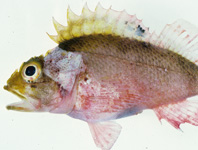Abstract
Anuran calls are conspicuous, diverse and subject to sexual selection. Many types of calls are described, but the most commonly studied is the advertisement call (Wells 2007; Toledo et al. 2014). Advertisement calls in anurans are emitted by males and some females (Toledo et al. 2014), and have the function of attracting conspecific mates and repelling male competitors. Because the advertisement calls of many species differ by such a magnitude that they serve as premating species (Heyer et al. 1996), it has been demonstrated that advertisement calls play an important role in species recognition, reproductive isolation, and may reflect evolutionary relations among taxa (Wells 2007; Escalona et al. 2018).
References
Bernal, M.H., Montealegre, D.P. & Páez, C.A. (2004) Estudio de la vocalización de trece especies de anuros del municipio de Ibagué, Colombia. Revista de la Academia Colombiana de Ciencias Exactas, Físicas y Naturales, 28, 385–390.
Bioacoustics Research Program. (2011) Raven Pro: Interactive Sound Analysis Software. Version 1.4. Computer software. Available from: http://www.birds.cornell.edu/raven (accessed 2 February 2020)
Castroviejo-Fisher, S., Guayasamin, J.M., Gonzalez-Voyer, A. & Vila, C. (2014) Neotropical diversification seen through glassfrogs. Journal of Biogeography, 41, 66–80.
https://doi.org/10.1111/jbi.12208
Catenazzi, A., Rodríguez, L.O. & Donelly, M.A. (2009) The advertisement calls of four species of glassfrogs (Centrolenidae) from southeastern Peru. Studies on Neotropical Fauna and Environment, 44 (2), 83–91.
https://doi.org/10.1080/01650520903036653
Duellman, W.E. (1976) Centrolenid frogs from Perú. Occasional Papers of the Museum of Natural History, University of Kansas, 52, 1–11.
Duellman, W.E. & Schulte, R. (1993) New species of centrolenid frogs from northern Peru. Occasional Papers of the Museum of Natural History, University of Kansas, 155, 1–33.
Escalona, M.D., Simões, P.I., Gonzalez-Voyer, A. & Castroviejo-Fisher, S. (2018) Neotropical frogs and mating songs: The evolution of advertisement calls in glassfrogs. Journal of Evolutionary Biology, 32 (2), 163–176.
https://doi.org/10.1111/jeb.13406
Frost, D.R. (2020) Amphibians Species of the World: An Online Reference. Version 6.0. Available from: http://research.amnh.org/vz/herpetology/amphibia (accessed 11 February 2020)
Gerhardt, H.C. (1991) Female mate choice in treefrogs: static and dynamic acoustic criteria. Animal Behaviour, 42, 615–635.
https://doi.org/10.1016/S0003-3472(05)80245-3
Guerra, V., Llusia, D., Gambale, P.G., Morais, A.R. & Bastos, R.P. (2018) The advertisement calls of Brazilian anurans: Historical review, current knowledge and future directions. Plos One, 13 (1), e0191691.
https://doi.org/10.1371/journal.pone.0191691
Goutte, S., Dubois, A., Howard, S.D., Márquez, R., Rowley, J.J.L., Dehling, J.M., Grandcolas, P., Xiong, R.C. & Legendre, F. (2018) How the environment shapes animal signals: a test of the acoustic adaptation hypothesis in frogs. Journal of Evolutionary Biology, 31 (1), 148–158.
https://doi.org/10.1111/jeb.13210
Guayasamin, J.M., Castroviejo-Fisher, S., Trueb, L., Ayarzagüena, J., Rada, M. & Vilà, C. (2009) Phylogenetic systematics of glassfrogs (Amphibia: Centrolenidae) and their sister taxon Allophryne ruthveni. Zootaxa, 2100 (1), 1–97.
https://doi.org/10.11646/zootaxa.2100.1.1
Heyer, W.R., Arcía-Lopez, J.M. & Cardoso, A.J. (1996) Advertisement call variation in the Leptodactylus mystaceus species complex (Amphibia: Leptodactylidae) with a description of a new sibling species. Amphibia-Reptilia, 17 (1), 7–31.
https://doi.org/10.1163/156853896X00252
Köhler, J., Jansen, M., Rodríguez, A., Kok, P.J.R., Toledo, L.F., Emmrich, M., Glaw, F., Haddad, C.F.B., Rödel, M. & Vences, M. (2017) The use of bioacoustics in anuran taxonomy: theory, terminology, methods and recommendations for best practice. Zootaxa, 4251 (1), 1–124.
https://doi.org/10.11646/zootaxa.4251.1.1
Ruiz-Carranza, P.M. & Lynch, J.D. (1991) Ranas Centrolenidae de Colombia IV. Nuevas especies de Cochranella del Grupo ocellata de la Cordillera Oriental. Lozania (Acta Zoológica Colombiana), 60, 1–16.
Ruiz-Carranza, P.M. & Lynch, J.D. (1995) Ranas Centrolenidae de Colombia V. Cuatro nuevas especies de Cochranella de la Cordillera Central. Lozania (Acta Zoológica Colombiana), 65, 1–16.
Stirman, R. & Pfenning, K.S. (2019) Competitively mediated changes in male toad calls can depend on call structure. Behavioral Ecology, 30 (5), 1344–1350.
https://doi.org/10.1093/beheco/arz085
Toledo, L.F., Martins, I.A., Bruschi, D.P., Passos, M.A., Alexandre, C. & Haddad, C.F.B. (2014) The anuran calling repertoire in the light of social context. Acta Ethologica, 18, 87–99.
https://doi.org/10.1007/s10211-014-0194-4
Twomey, E., Delia, J. & Castroviejo-Fisher, S. (2014) A review of northern Peruvian glassfrogs (Centrolenidae), with the description of four new remarkable species. Zootaxa, 3851 (1), 1–87.
https://doi.org/10.11646/zootaxa.3851.1.1
Wells, K.D. (2007) The Ecology and Behavior of Amphibians. The University of Chicago Press, Chicago, Illinois, 1162 pp.


